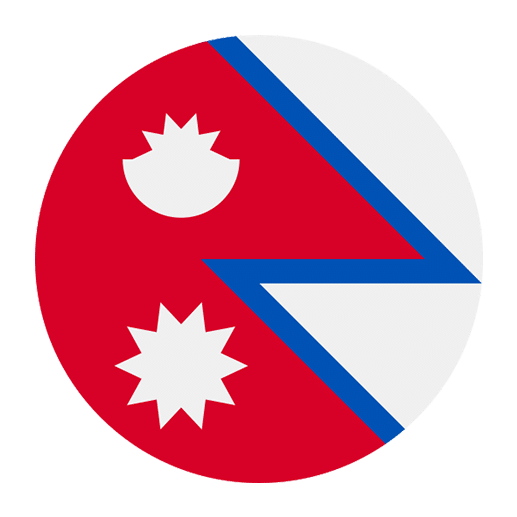Nepali, the official language of Nepal, is a rich and vibrant language spoken by millions of people. For English speakers aiming to learn Nepali, understanding the nuances of its grammar is essential. One such nuance involves the comparative and superlative degrees of adjectives. This article will delve into the structure and usage of comparative and superlative degrees in Nepali, providing clear examples and explanations to help you grasp these concepts.
Understanding Adjectives in Nepali
Before diving into the comparative and superlative degrees, it’s important to have a basic understanding of adjectives in Nepali. An adjective is a word that describes or modifies a noun. In Nepali, adjectives usually come before the noun they modify, similar to English. For example:
– रमाइलो घर (ramailo ghar) – beautiful house
– ठूलो कुकुर (thulo kukur) – big dog
Forming Comparative Degrees
In English, comparative degrees are formed by adding “-er” to the end of the adjective or by using the word “more” before the adjective. In Nepali, forming the comparative degree involves adding the suffix “-भन्दा” (bhanda) to the adjective, which is then followed by the noun being compared. Essentially, “-भन्दा” (bhanda) translates to “than” in English.
Here are a few examples:
– ठूलो (thulo) – big
– यो घर त्यो घरभन्दा ठूलो छ। (yo ghar tyo gharbhanda thulo cha.) – This house is bigger than that house.
– सानो (sano) – small
– यो कुकुर त्यो कुकुरभन्दा सानो छ। (yo kukur tyo kukurbhanda sano cha.) – This dog is smaller than that dog.
– राम्रो (ramro) – good
– यो किताब त्यो किताबभन्दा राम्रो छ। (yo kitab tyo kitabbhanda ramro cha.) – This book is better than that book.
In these examples, “-भन्दा” (bhanda) serves as the comparative marker, indicating that one noun is being compared to another.
Special Considerations:
1. When comparing two items, the adjective does not change its form apart from the addition of “-भन्दा” (bhanda).
2. Context is essential in understanding which items are being compared, so always ensure that the sentence structure clearly indicates the subject and object of comparison.
Forming Superlative Degrees
In English, superlative degrees are formed by adding “-est” to the end of the adjective or by using the word “most” before the adjective. In Nepali, forming the superlative degree typically involves the use of the prefix “सबभन्दा” (sabbhanda) before the adjective. “सबभन्दा” (sabbhanda) translates to “the most” in English.
Here are a few examples:
– ठूलो (thulo) – big
– यो भवन शहरमा सबैभन्दा ठूलो छ। (yo bhawan shaharma sabbhanda thulo cha.) – This building is the biggest in the city.
– सानो (sano) – small
– यो गाउँमा सबैभन्दा सानो घर हो। (yo gau ma sabbhanda sano ghar ho.) – This is the smallest house in the village.
– राम्रो (ramro) – good
– यो विद्यालय सबैभन्दा राम्रो छ। (yo vidyalaya sabbhanda ramro cha.) – This school is the best.
In these examples, “सबभन्दा” (sabbhanda) serves as the superlative marker, indicating that the noun being described is at the extreme end of the scale in comparison to others.
Special Considerations:
1. The use of “सबभन्दा” (sabbhanda) is quite straightforward and doesn’t change the form of the adjective itself.
2. Ensure clarity by specifying the group or category being compared when using the superlative degree.
Common Pitfalls and Tips
Learning any new language comes with its own set of challenges, and mastering comparative and superlative degrees in Nepali is no different. Here are some common pitfalls and tips to help you along the way:
1. Contextual Clarity:
Always ensure that the context of your sentence is clear. In Nepali, as in English, it is crucial to clearly identify which items are being compared. This will help avoid confusion.
2. Practice with Common Adjectives:
Start with common adjectives and practice forming both comparative and superlative degrees. Here are a few to get you started:
– राम्रो (ramro) – good
– नराम्रो (naramro) – bad
– महँगो (mahango) – expensive
– सस्तो (sasto) – cheap
– पुरानो (purano) – old
– नयाँ (naya) – new
3. Conversational Practice:
Engage in conversations with native speakers or fellow learners. Practical usage will help reinforce your understanding and help you become more comfortable with the structures.
4. Listen and Observe:
Listening to Nepali conversations, watching Nepali movies, or reading Nepali texts can provide valuable insights into how comparative and superlative degrees are used naturally.
Comparative and Superlative Degrees with Irregular Adjectives
Just as in English, Nepali has some adjectives that do not follow the regular rules for forming comparative and superlative degrees. These are often referred to as irregular adjectives. Here are a few examples and how they are used:
1. धेरै (dherai) – many/much
– Comparative: बढी (badi)
– यो साल धेरै छ। (yo saal dherai cha.) – This year is many.
– यो साल भन्दा त्यो साल बढी छ। (yo saal bhanda tyo saal badi cha.) – That year is more than this year.
2. थोरै (thorai) – few/little
– Comparative: कम (kam)
– यो पानी थोरै छ। (yo pani thorai cha.) – This water is little.
– त्यो पानी भन्दा यो पानी कम छ। (tyo pani bhanda yo pani kam cha.) – This water is less than that water.
Note that in these examples, the adjectives change form entirely rather than simply adding a suffix or prefix.
Exercises and Practice
To solidify your understanding of comparative and superlative degrees in Nepali, it’s important to practice with a variety of exercises. Here are a few exercises you can try:
Exercise 1: Forming Comparatives
Convert the following sentences into comparative sentences:
1. यो किताब राम्रो छ। (yo kitab ramro cha.) – This book is good.
2. यो गाडी सस्तो छ। (yo gadi sasto cha.) – This car is cheap.
3. त्यो मान्छे अग्लो छ। (tyo manche aglo cha.) – That person is tall.
Exercise 2: Forming Superlatives
Convert the following sentences into superlative sentences:
1. यो विद्यालय राम्रो छ। (yo vidyalaya ramro cha.) – This school is good.
2. त्यो गाडी महँगो छ। (tyo gadi mahango cha.) – That car is expensive.
3. यो भवन अग्लो छ। (yo bhawan aglo cha.) – This building is tall.
Exercise 3: Irregular Adjectives
Use the correct form of the adjective to complete the sentences:
1. यो पानी (थोरै) छ। (yo pani ____ cha.) – This water is little.
2. त्यो गाडी (धेरै) छ। (tyo gadi ____ cha.) – That car is many.
3. यो किताब (कम) छ। (yo kitab ____ cha.) – This book is less.
Conclusion
Mastering the comparative and superlative degrees of Nepali adjectives is an essential step in becoming proficient in the language. By understanding the rules and practicing regularly, you’ll be able to describe and compare objects, people, and places with greater accuracy and confidence.
Remember, language learning is a journey that requires patience and consistent effort. Embrace the process, practice diligently, and don’t hesitate to seek help from native speakers or language learning communities. With time and perseverance, you’ll find yourself becoming more fluent and comfortable in using Nepali adjectives in comparative and superlative forms. Happy learning!

